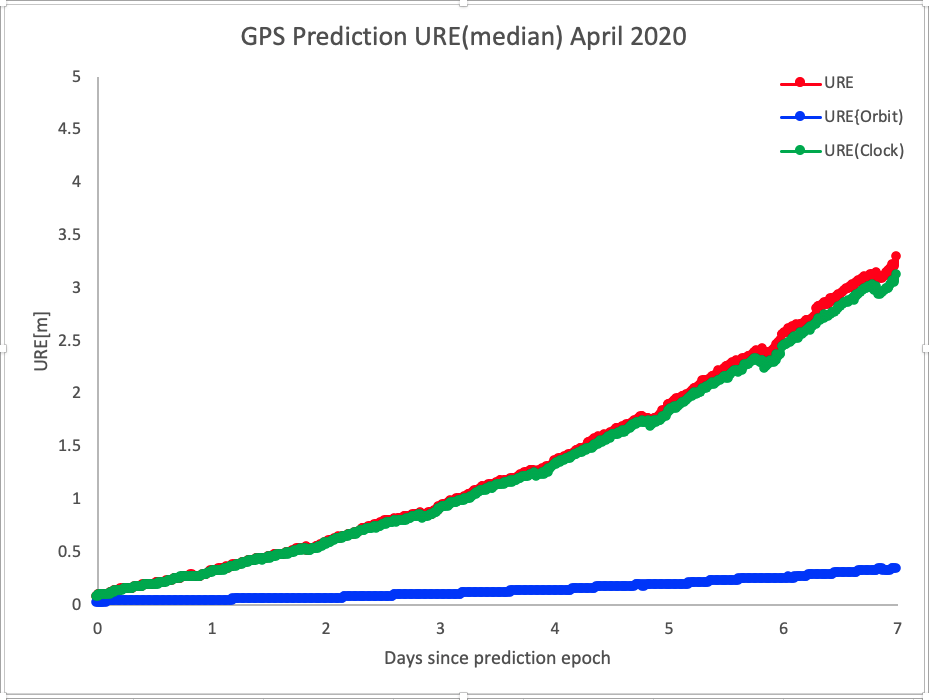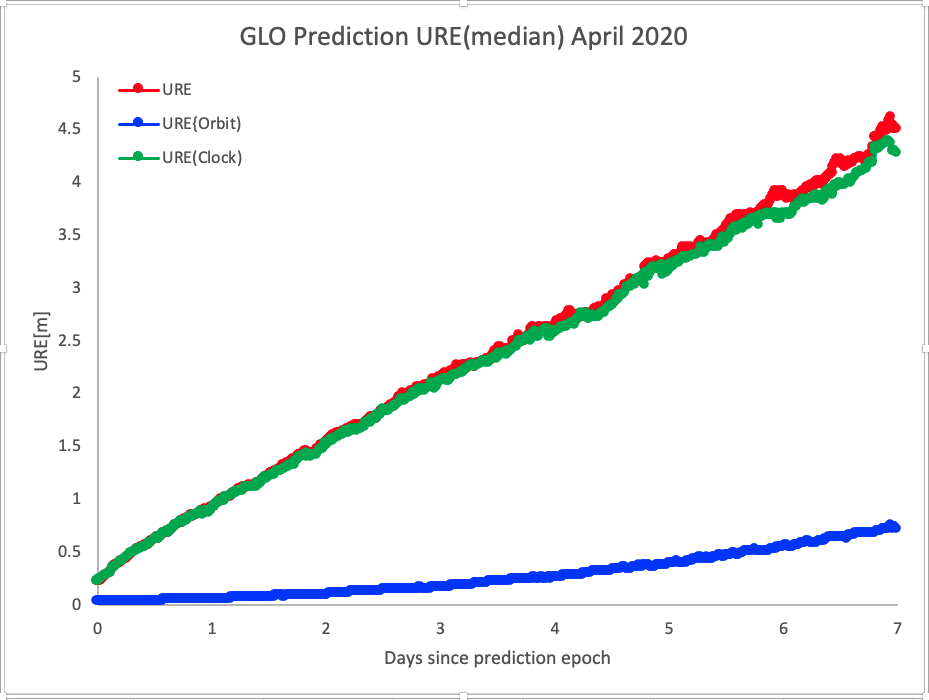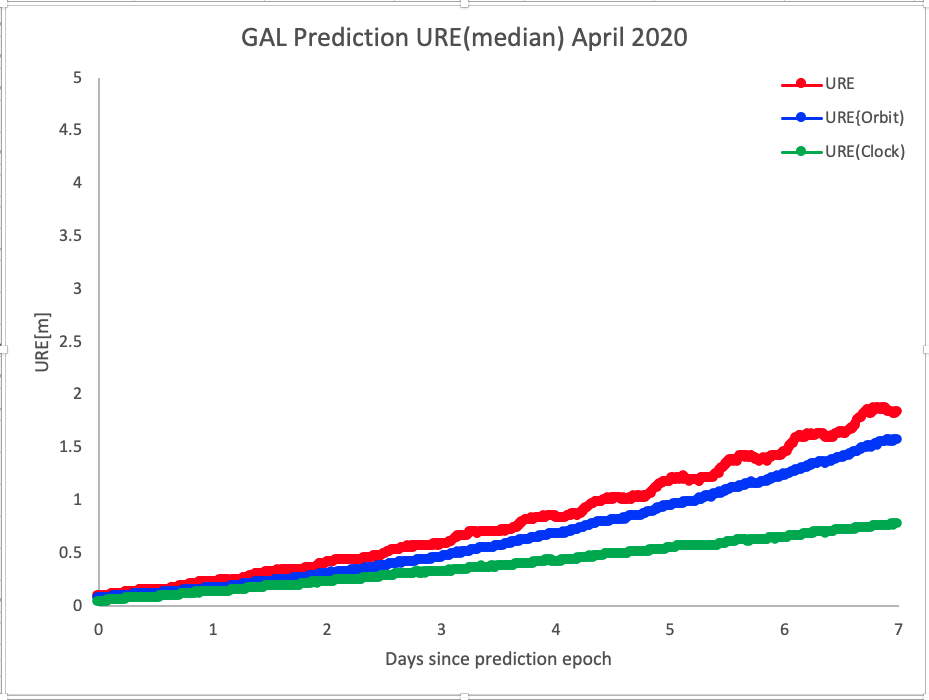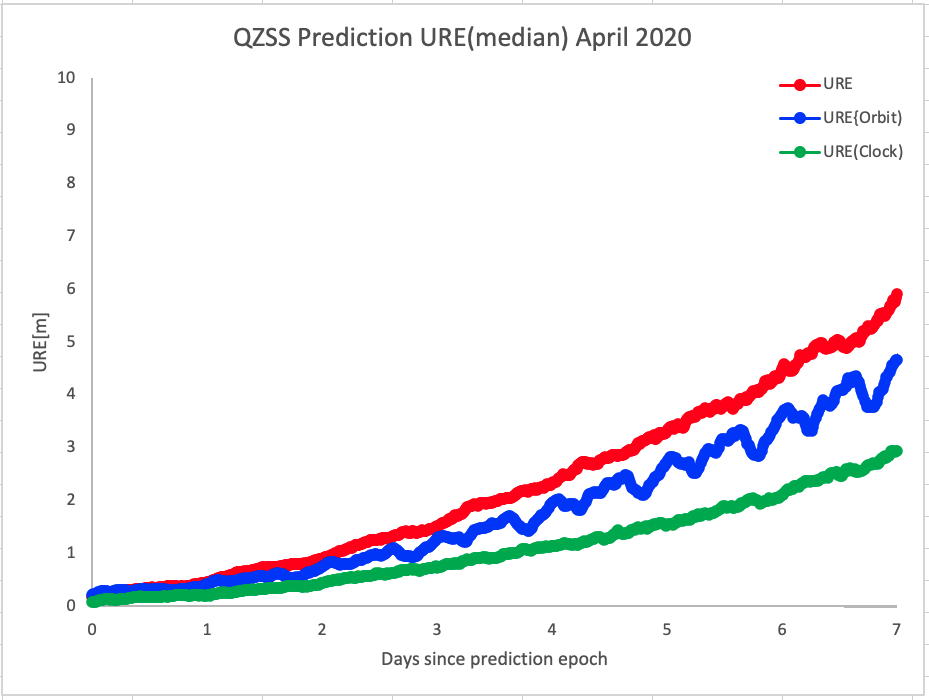|
JPL has been performing GPS orbit and clock predictions (and disseminating them over the internet) since the early 1990s. As enduring leaders and innovators in modeling satellite dynamics and in orbit determination, we bring unparalleled expertise to deriving these predictions.
Our prediction scheme incorporates state of the art satellite dynamics models, the most recent tracking data, and sophisticated adaptive prediction algorithms.
GPS, GLONASS, BeiDou, Galileo, and QZSS are supported. Prediction performance for GPS, GLONASS, and Galileo is much better than 10 m median User Range Error (URE) after 7 days. BeiDou will get there eventually when they improve their onboard clocks.
GNSS Prediction Performance
as a function of prediction duration |
GPS

GLONASS

BeiDou

Galileo

QZSS

|
| Distribution of GNSS prediction errors after 7 days |
|
|
Key features:
- 7 day prediction, 6 times daily, 15 minutes temporal resolution
- Accuracy estimates are included for every epoch
- Timed NANU-based warning flags are included
- Multiple file formats are available, including SP3c, RINEX Navigation, and GIPSY
- The prediction files are available through sFTP from multiple redundant servers
- Based on real-time orbit and clock solutions to minimize extrapolation period
- Longer term predictions available upon request, as well as optimizations for user-specified prediction intervals
We incorporate into our prediction every known future event (announced in the NANUs) that might compromise the integrity of the predictions. While our predicted orbits and clocks are highly accurate, prediction is fundamentally risky because certain aspects of the satellite and clock dynamics are difficult to model, and NANU announcements may not be completely accurate.
We have found that the roughly linear relationship between the median URE and the prediction length for 1-3 days predictions is quite typical. The quadratic behavior for longer term prediction is also quite typical. Except for the first one or two prediction days, when the URE can be smaller than the clock error, the URE is strongly dominated by the clock prediction error.
As with any other GDGPS product, we continue to actively research methods and means to improve the quality of the prediction products.
|